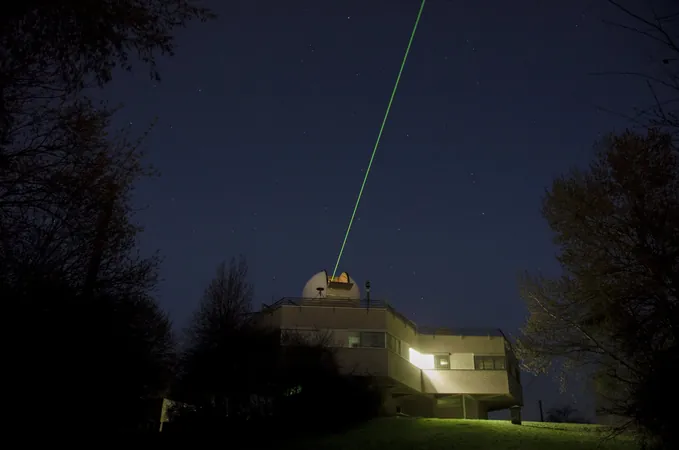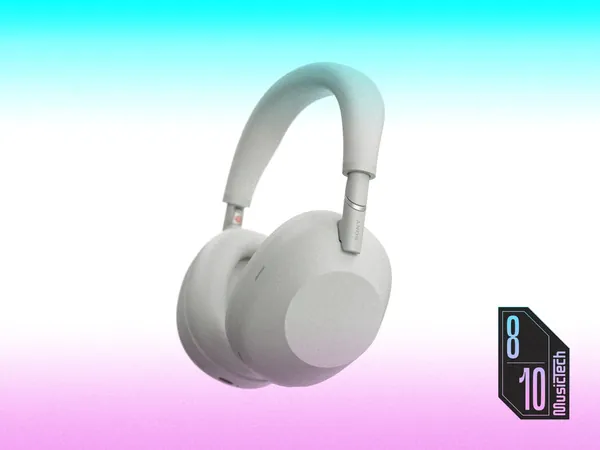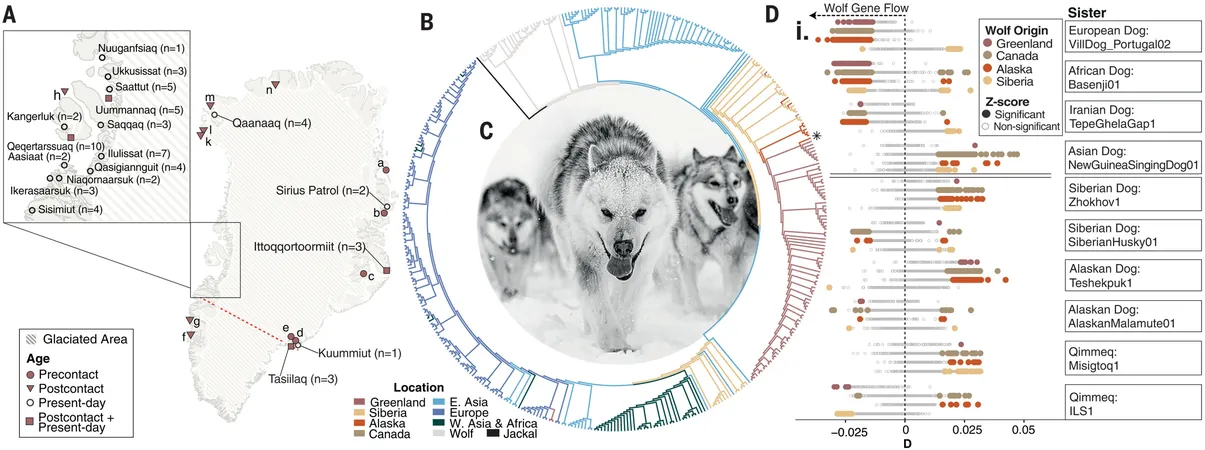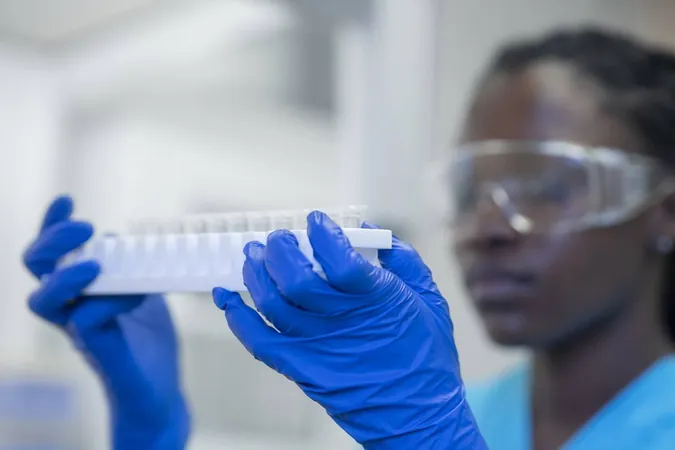
Groundbreaking Laser Technology Enhances Space Debris Tracking and Water Mass Observation
2024-10-30
Author: Jia
Groundbreaking Laser Technology Enhances Space Debris Tracking and Water Mass Observation
In an exciting development at the Institute of Geodesy, TU Graz, researchers have uncovered a powerful connection between Earth's gravitational field and the movement of satellites, including the vast amounts of space debris surrounding our planet. This connection not only impacts how satellites orbit but also reveals critical insights regarding water mass changes on Earth.
The innovative COVER project integrates satellite-based gravity field measurements with satellite laser ranging (SLR) techniques, providing a significant boost in both gravity field calculation accuracy and the monitoring of objects in space. The collected data has been utilized to enhance the gravity recovery object-oriented programming system (GROOPS), available for public use on GitHub.
Accurate Gravitational Insights
According to Sandro Krauss from the Institute, existing satellite missions such as Grace, Grace Follow-on, and GOCE have yielded incredible data for understanding Earth's gravity field; nevertheless, these missions struggle to resolve the long-wavelength components that encompass continental-scale mass distributions. In contrast, the SLR method offers remarkable precision for these measurements. By employing a network of SLR stations to direct lasers at satellites equipped with retro-reflectors, researchers can pinpoint satellite positions to within mere centimeters. This technique also reveals variations in orbits that correspond with shifting mass distributions on Earth.
Krauss emphasizes the importance of combining SLR data with other satellite measurement techniques, allowing for unparalleled insights into the gravitational field and water mass distributions. Furthermore, this sophisticated data collection enhances the accuracy of tracking satellites and tracking space debris, promoting safety in orbit through more reliable trajectory predictions.
The Space Debris Crisis
Currently, an estimated 40,000 pieces of space debris larger than 10 centimeters are in orbit around Earth, alongside nearly 1 million pieces measuring 1 centimeter or more. Traveling at speeds of approximately 30,000 km/h, these objects do not all move in the same direction, raising the risk of collisions that could destroy satellites and jeopardize the safety of astronauts aboard space stations and spacecraft. Consequently, accurately tracking and predicting the trajectories of these debris objects has never been more crucial.
Precision Over Estimation
While radar measurements are typically employed to monitor space debris, their accuracy is inherently limited, often resulting in orbital predictions that can deviate by several kilometers. In collaboration with the Satellite Laser Ranging Station of the Austrian Academy of Sciences' Space Research Institute, significant advancements have been achieved. Researchers utilized unique force models to ascertain satellite or debris positions with approximately 100-meter accuracy, vastly improving tracking capabilities using the surveying laser. Subsequent measurements further refined orbital behavior understanding, allowing researchers to fine-tune their predictions.
Torsten Mayer-Gürr from the Institute explains that orbit predictions rely heavily on accurately modeling the forces acting on satellites, including gravitational influences from water masses. The combination of sophisticated orbit modeling with SLR measurements empowers researchers to deliver far more precise calculations with their GROOPS software.
An Open Invitation for Collaborative Improvement
What sets GROOPS apart is its open-source framework, which encourages user feedback and collaboration for continual improvements in modeling techniques. As the only institution providing such an extensive free package for gravity field determination and SLR processing, the Institute of Geodesy at TU Graz positions itself at the forefront of space research.
With these emerging technologies, the quest to maintain a safe and sustainable environment in Earth's orbit continues, allowing scientists to navigate the challenges posed by increasing space debris and enhance our understanding of global water mass distribution. As these techniques evolve, the future of space exploration and safety is looking brighter than ever!




 Brasil (PT)
Brasil (PT)
 Canada (EN)
Canada (EN)
 Chile (ES)
Chile (ES)
 Česko (CS)
Česko (CS)
 대한민국 (KO)
대한민국 (KO)
 España (ES)
España (ES)
 France (FR)
France (FR)
 Hong Kong (EN)
Hong Kong (EN)
 Italia (IT)
Italia (IT)
 日本 (JA)
日本 (JA)
 Magyarország (HU)
Magyarország (HU)
 Norge (NO)
Norge (NO)
 Polska (PL)
Polska (PL)
 Schweiz (DE)
Schweiz (DE)
 Singapore (EN)
Singapore (EN)
 Sverige (SV)
Sverige (SV)
 Suomi (FI)
Suomi (FI)
 Türkiye (TR)
Türkiye (TR)
 الإمارات العربية المتحدة (AR)
الإمارات العربية المتحدة (AR)